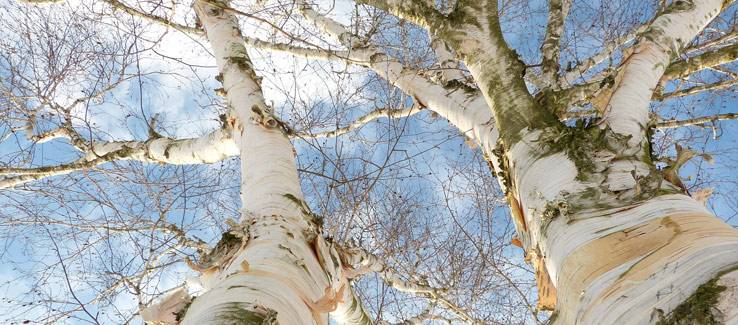4 Healing Trees for Your Backyard
If you could grow or plant a tree that helps fight cancer, would you do it? Before there was modern medicine, trees offered mankind natural remedies to ailments through their leaves, bark, roots, and sap.
Among the herbs, and vegetables you grow in your backyard, some trees should be considered. Of the many tree species with medicinal properties, there are four that stand out and offer incredible natural benefits.
fasttreeremovalatlanta.com gathered medicinal and healing property information for oak trees, pine trees, birch trees, and slippery elm trees.
Medicinal Tree Bark
For all of the trees in this article, there are many medicinal properties contained just below the bark (in a layer called the cambium). However, stripping the bark from any tree can lead to its decline in health, insect infestation, fungal infection, and death.
Removing rings of bark from around the circumference of a tree can cause girdling. Girdling is the strangulation of a tree, it occurs when nutrients can no longer flow freely through the cambium layer either by applied constant pressure (ropes and vines) or physical removal.
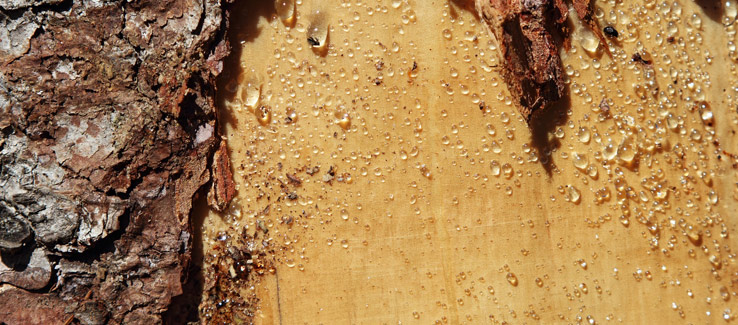
To avoid girdling or the decline or death of your tree, select a branch to prune back, and use the bark from that branch.
Oak Tree Properties and Benefits
The Oak tree is a symbol of strength and endurance which has been chosen as the national tree of many countries. For as long as humans have walked the earth, oak trees have been a source of food, medicine, ceremonies, and building. Many traditions still consider the oak tree to be sacred.
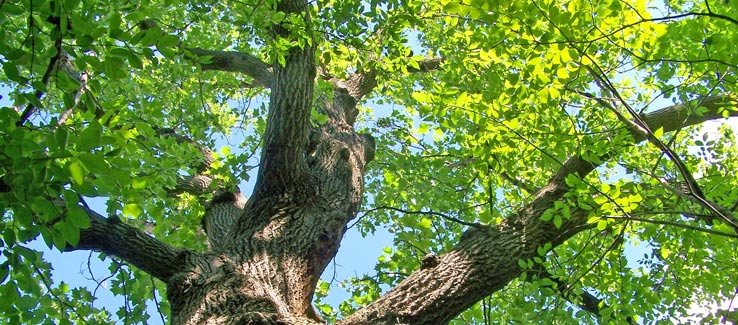
From Native Americans to European herbalists, the oak tree has been used to treat a variety afflictions such as:
• Swelling
• Dysentery
• Bleeding
• Tumors
• Poisoning Antidote
When made into a tea, oak tree bark serves as an effective diuretic, treats loose stools, ulcers, diarrhea, and can be gargled to soothe a sore throat.
When the dried inner bark is ground into a powder, it can be made into a paste by adding water, which can then be applied to the skin to treat poison ivy, burns, or wounds.
Pine Tree Properties and Benefits
The pine tree being one of the most abundant and useful tree species on our planet, is capable of providing food, medicine, and shelter.
Tea – A handful of pine needles steeped in boiling water for 5 minutes creates a tea packed with vitamin C.
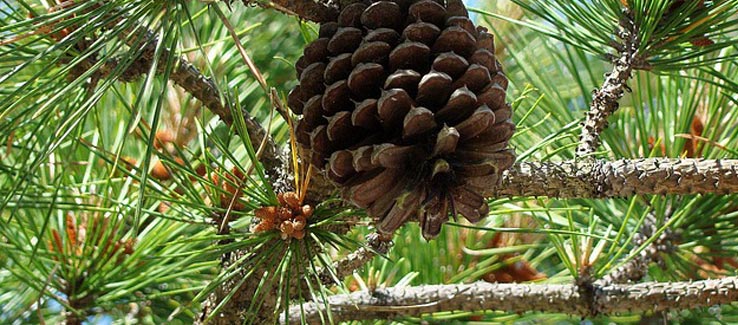
While the majority of pine needles are safe to consume, the following species are poisonous and should NOT be consumed:
• Norfolk Island Pine
• Yew
• Western Yellow Pine
• Ponderosa Pine (Bull Pine)
• Blackjack Pine
Vitamins and Antioxidants – Vitamin C is an essential component of the human immune system with powerful antioxidant properties which help in the prevention of disease and chronic illness. The consumption of dried pine bark or tea from its needles provides an incredibly higher amount of vitamin C than found in any other tree species.
Other antioxidants found in pine bark and needles are carotenoids and vitamin A. This combination, when consumed can provide the following benefits:
• Promotes Respiratory Health
• Boosts the Immune System
• Improves Blood Circulation
• Helps Prevent Cataracts
• Improves Vision
• Promotes Skin and Hair Health
Pine Nuts – All varieties of pine nuts are edible. As with the bark and needles, pine nuts are packed with antioxidants, as well as being rich in healthy fats.
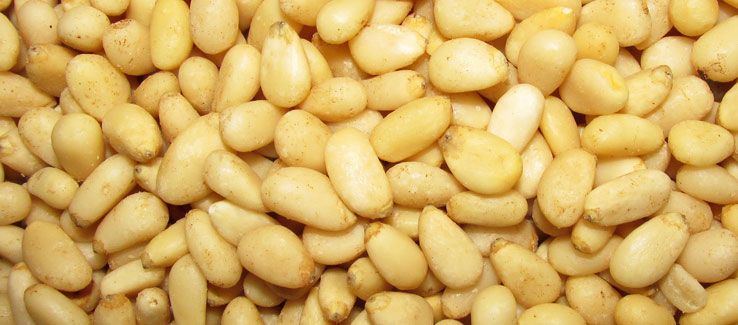
Birch Tree Properties and Benefits
Besides being an incredibly beautiful species, birch trees with their thin papery bark and colorful canopy offer much more than an appealing aesthetic.
This species has a multitude of uses and medicinal properties that most people are unaware of. The following are some of those benefits:
Birch Leaf Tea – When birch leaves are steeped in boiling water, the resulting tea can be used to help heal sores in the mouth, and assist in the healing of gout, kidney, and bladder problems.
Birch Bark Tea – Tea made from birch bark is an excellent detoxifier which serves as a laxative helping remove waste from the body. This tea also helps relieve the pain and discomfort caused by rheumatism, helps clear up skin conditions like psoriasis and eczema, and reduce fluid retention.

Birch Sap – For hundreds of years, birch sap has been consumed as a health tonic and nutritional supplement. With a taste similar to maple syrup, the consumption of birch sap presents detoxifying, cleansing, and anti-inflammatory properties.
Betulinic acid is a compound found in birch sap with anti-tumor properties which help fight specific forms of cancer.
Researchers from Romania’s Victor Babes University of Medicine and Pharmacy tested betulinic acid against cervical cancer cells, breast cancer cells, and skin cancer cells. The team was able to confirm that the compound was able to halt the growth of both skin and cervical cancer cells.
Birch Water – Made from birch sap, birch water is a slightly sweet, thin syrup-like drink loaded with vitamins, proteins, amino acids, minerals, and offers many health benefits.
Slippery Elm Tree Properties and Benefits
A relative of the popular American elm, slippery elm was not a popular selection for landscaping. This species only reach heights of 50 to 80 feet, while the tree develops a vase-like shape, it is not as eye-catching or graceful as the American elm.
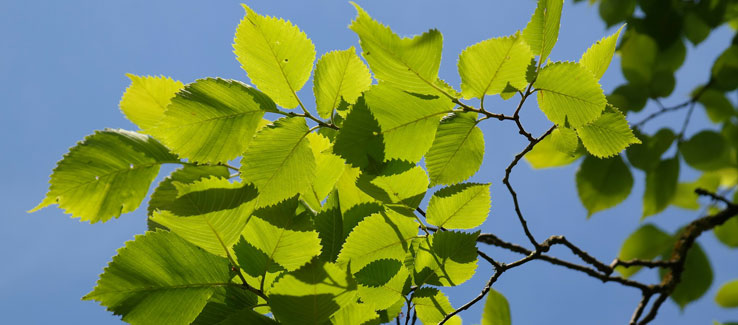
Slippery elm gets its name from the trees inner bark which is mucilaginous (having a viscous or gelatinous consistency). Due to its soothing properties, it was widely used:
• As a poultice to heal wounds
• As a wound dressing
• For the treatment of infected or swollen glands
• As an eye-wash for sore eyes
• To make a tea taken as a physic
• To treat sore throats
• As a laxative
• To heal coughs and bronchial ailments
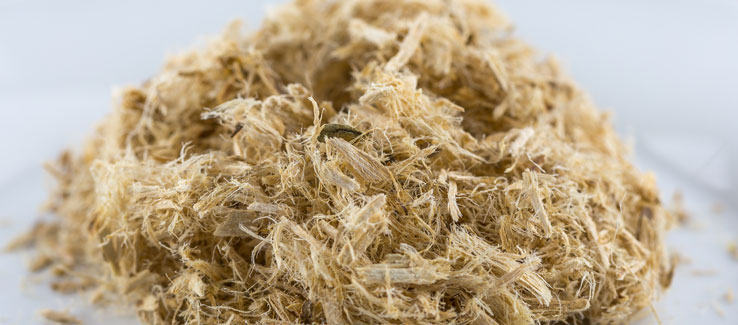
For tips on preparing soil or planting trees, visit fasttreeremovalatlanta.com/tree-planting-soil-considerations-care-tips
Medicinal Trees for Your Backyard
The trees you grow may keep you well. Before modern medicine, mankind had tapped into the healing power of trees and plants using remedies made from their leaves, bark, roots, and sap.
In this article, you discovered the medicinal and healing properties of oak, pine, birch, and slippery elm trees.
Planting a medicinal tree in your backyard landscape adds diversity to your yard’s ecosystem while offering year-round beauty and some natural remedies to basic ailments.
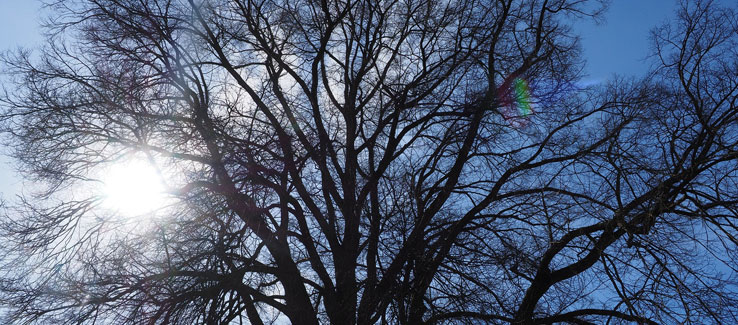
Disclaimer:
All possible measures have been taken to ensure the accuracy, reliability, timeliness, and authenticity of the above information; however, fasttreeremovalatlanta.com does not take nor assume any liability. Using any of the information provided by this article is solely at the readers’ discretion. In case of any medical emergencies or persistent health issues, fasttreeremovalatlanta.com advise you to seek qualified medical attention before putting to use any advice or tips given by any third party.
Sources:
https://www.extension.iastate.edu/forestry/iowa_trees/trees/slippery_elm.html
https://news.d.umn.edu/news-center/news/amazing-birch-bark-gets-boost-0
https://www.realnatural.org/researchers-determine-that-birch-bark-extract-blocks-cervical-and-skin-cancer-growth/
https://www.ncbi.nlm.nih.gov/pubmed/24568161
https://www.frostburg.edu/fsu/assets/File/ACES/ulmus%20rubra%20-final.pdf
https://forestry.usu.edu/news/utah-forest-facts/native-american-uses-of-utah-forest-trees
http://www.bio.brandeis.edu/fieldbio/medicinal_plants/pages/White_Oak.html
https://plus.google.com/+Fasttreeremovalatlantaservices
(404) 220-9965
(404) 220-9963

